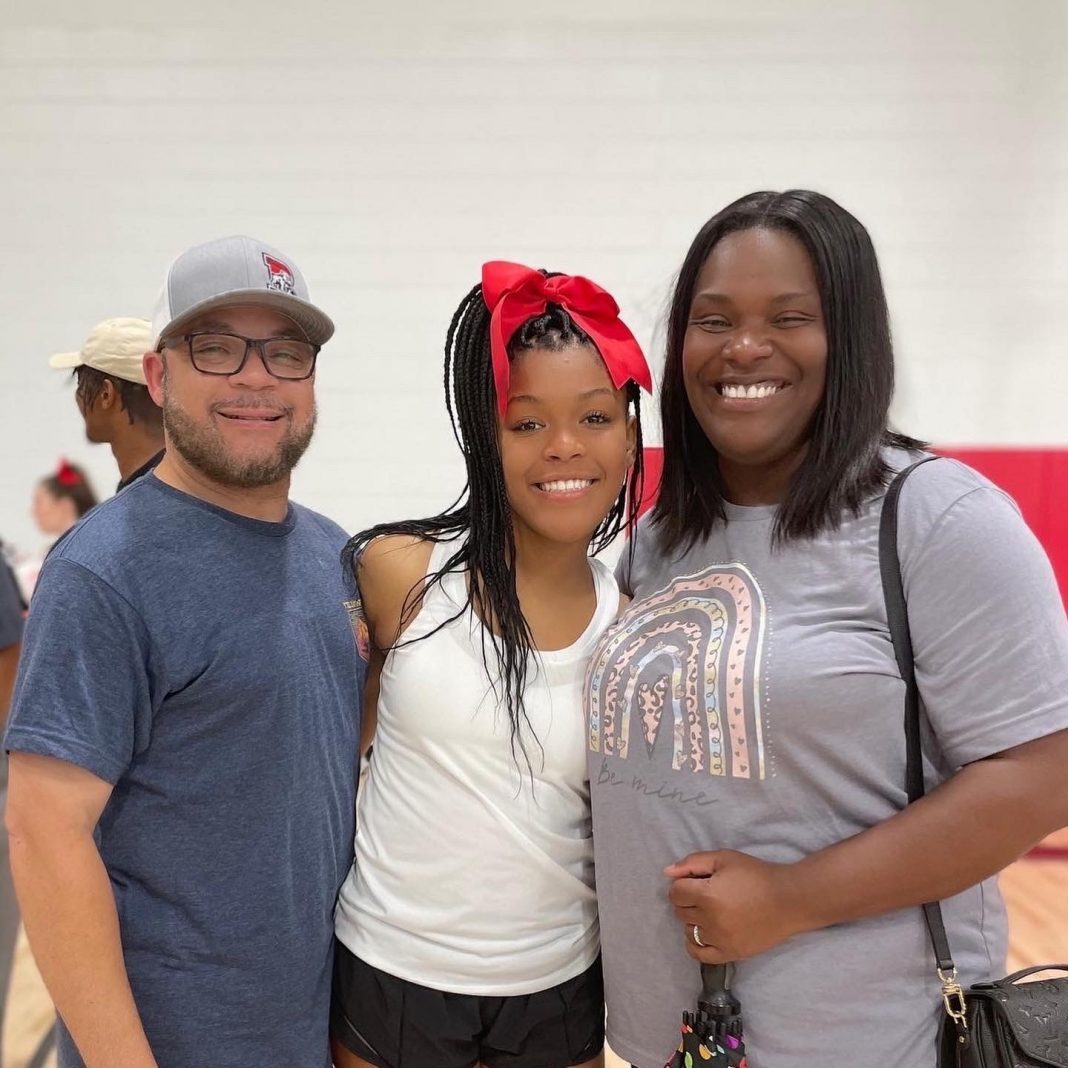The month of May is when we kick off Food Allergy Awareness Month! This topic is so important to my family. My fourteen-year-old daughter Peyton was diagnosed at the age of three with multiple food allergies (peanut, tree nut, shellfish, dairy, egg yolk, and penicillin). First, let’s define what a Food Allergy is–an immune system response to a food that the body mistakenly believes is harmful.

Peyton’s reactions are so severe that she has gone into anaphylactic shock after she ate a cashew, at the time we did not know she was severely allergic to any foods. This was her very first reaction, and it was severe!
RELATED READING :: How to be a Good “Food Allergy” Friend
I did not know the signs for anaphylaxis and the only thing that saved me in that moment was the fact that I was already at a doctor’s appointment for my older son. The staff at ARC Southwest jumped into action and administered Epinephrin and Benadryl and called 911. As we waited for the EMS to arrive Peyton was put on oxygen because her blood pressure was severely dropping. She began to have an asthma attack, her throat started to close, her eyes and lips began to swell, and her body was covered with blood blisters. EMS arrived and gave her more Benadryl and another round of Epinephrin, and off we went to Dell Children’s.

Fast forward eleven years later, I have a thriving fourteen-year-old beautiful daughter who lives life to the fullest every day. That’s not to say that we don’t have challenges (because we do), but we have found a way to navigate her food allergies that works for us. Can we eat at every restaurant as a family? No! But that’s okay…..this was a change that our entire family had to adapt to. When I say entire family, I mean our entire family! We have a big family on both sides, when Peyton was diagnosed everyone came together (Grandparent’s, Uncle’s, Aunt’s, Cousin’s, Friend’s) and understood the mission–Peyton First! They adapted to her needs when she came around, they learned what she could and couldn’t eat, and they were trained on how to use an Epi Pen!

Everyday is not a bed of roses, and everyone is not understanding to how serious this is. Some people are willing and open to learn more, some not. My family and I started our Non-Profit Peyton’s Allergy Shield of Hope on November 12, 2019. Peyton’s Allergy Shield of Hope was birthed from my trials and tribulations as a mother of a child with food allergies who for years had to deal with the snide remarks from other parents, room moms, and my daughter not being included in “in person classroom assignments” because of her food allergies. I knew my daughters’ rights, but I kept my mouth shut and didn’t make a fuss. There were so many times when we felt lost and alone trying to figure out this new life we had embarked on together as a family of five. No one gave us a road map, or a manual with helpful tips and guides on where to start as a parent of a newly diagnosed child with food allergies. I said to my husband, let’s start a Non-Profit! The purpose of starting our Non-Profit is to advocate and educate for adults, parents/children living with food allergies. I was that parent who was left there to figure it out by myself. No guidance or help from anyone. If only I knew what I know now when Peyton was diagnosed in 2010 the transition would have been a smoother process.

Below are some statistics about food allergies:
- Approximately 32 million Americans Have Food Allergies, including 11% of adults and almost 6 million children.
- One in 13 Children or Roughly Two Children In Every Classroom Have Food Allergies
- Every Three Minutes A Food Allergy Reaction Sends Someone to The Emergency Room
- There Is Currently No Cure for Food Allergies.
- Black Children Are 7% More Likely to Have a Food Allergy Then White Children (according to a study by Dr. Ruchi Gupta).
- Asian Children are 24% More Likely than White Children to Have Food Allergies (according to a study by Dr. Ruchi Gupta).
- Black and Hispanic Children Are Disproportionately More Likely to Live in Poor Communities, To Have Asthma, and To Suffer from Systemic Racism In The Delivery Of Medical Care.










